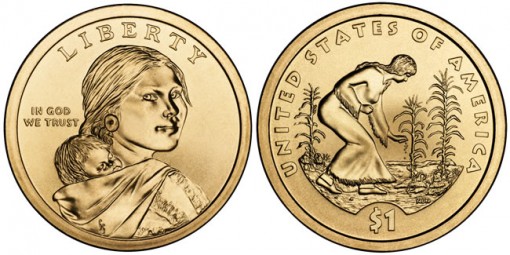The 2009 Native American $1 Coins marked the first year in a series of annually changing reverse design coins issued by the US Mint.
These coins actually continued a series known as the Sacagawea Dollars that started back in 2000, but that older series did not feature changing reverse designs. Congress authorized the changes to the coins with the Native American $1 Coin Act signed by President George W. Bush on September 20, 2007 as Public Law 110-82.
Under the Act, many of the specifications for the coins remained the same as the previous dollar strikes, but with two major exceptions. The first was the annually changing designs on the reverse which the new law required to be "images celebrating the important contributions made by Indian tribes and individual Native Americans to the development of the United States and the history of the United States." These new reverse designs are to continue until at least the year 2016 when the similar Presidential $1 Coin series is scheduled to end.
The other major change deals with inscriptions. Congress required the US Mint to use an edge inscription on these new strikes taking E PLURIBUS UNUM and the year of minting off of the obverse and reverse where they had appeared on the Sacagawea Dollar. The Mint also moved the mintmark to the edge.
Other than those changes, the rest of the specifications remained the same for the new coins including being struck from a manganese-brass over copper composition. The manganese-brass gives each coin its distinctive golden hue.
The obverse of the 2009 Native American $1 Coins contains the same basic design as found on the previous dollar series – a portrait of Sacagawea with her infant son Jean Baptiste Charbonneau strapped to her back. Sacagawea was the young Shoshone woman who accompanied the Lewis and Clark Expedition through the wilderness of the United States as a guide in the early 1800’s. The design was originally completed by Glenna Goodacre.
Shown on the reverse of the strike is a Native American woman planting seeds in the soil in the "Three Sisters" method. This method was discovered by Native Americans and included corn, beans and squash, which, when planted together actually aid in each plants growth. The reverse was designed by Thomas D. Rogers.

